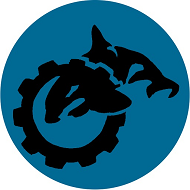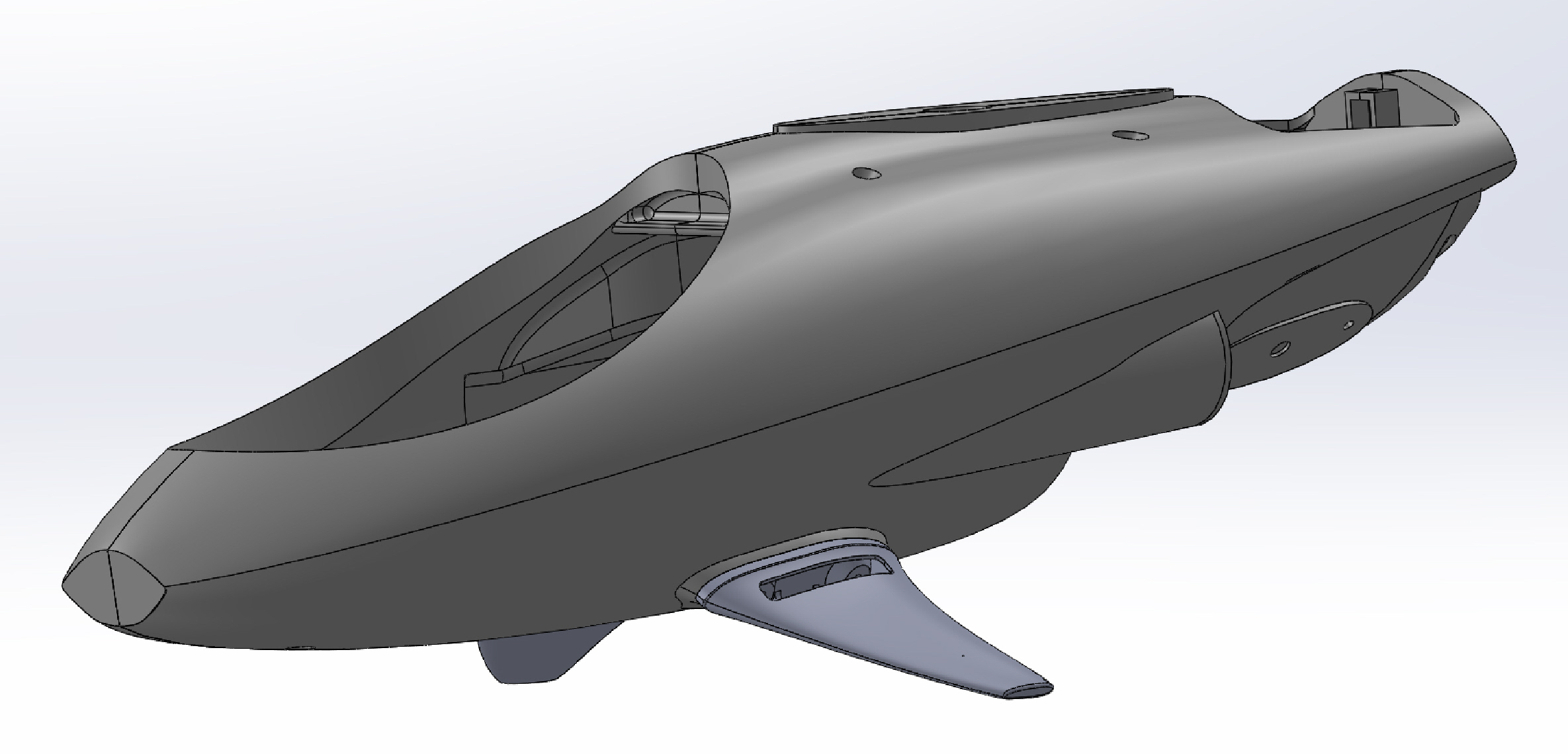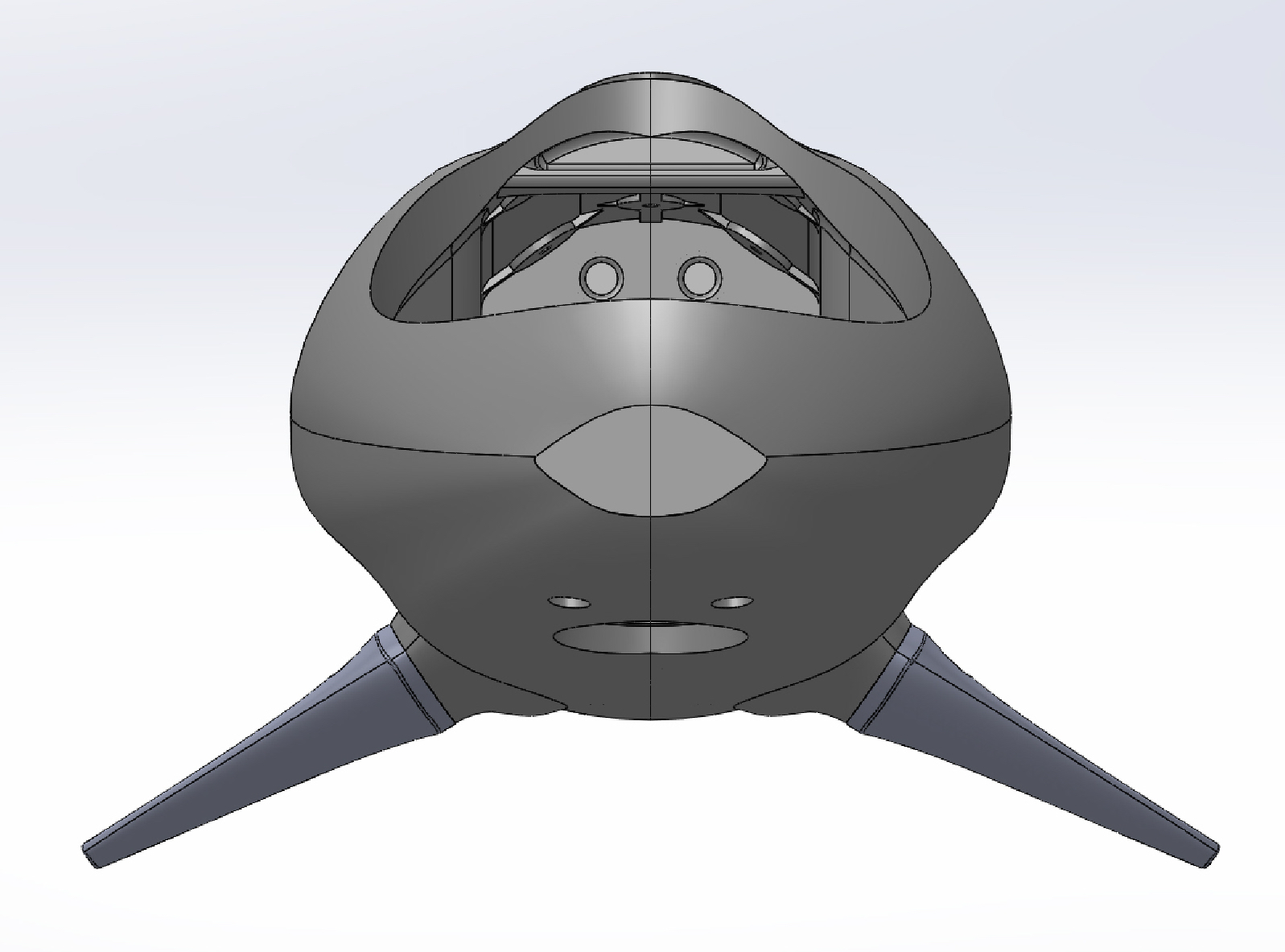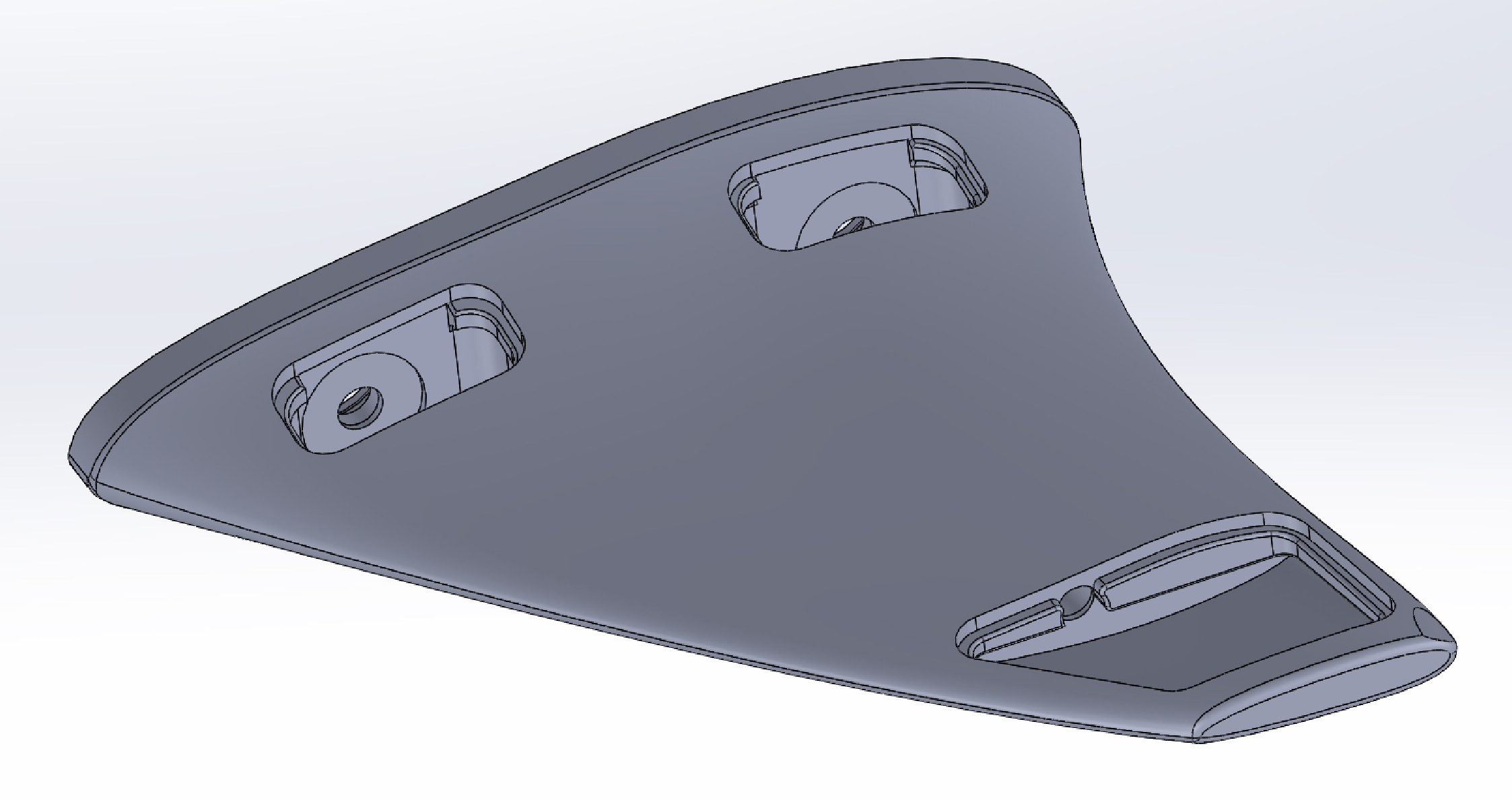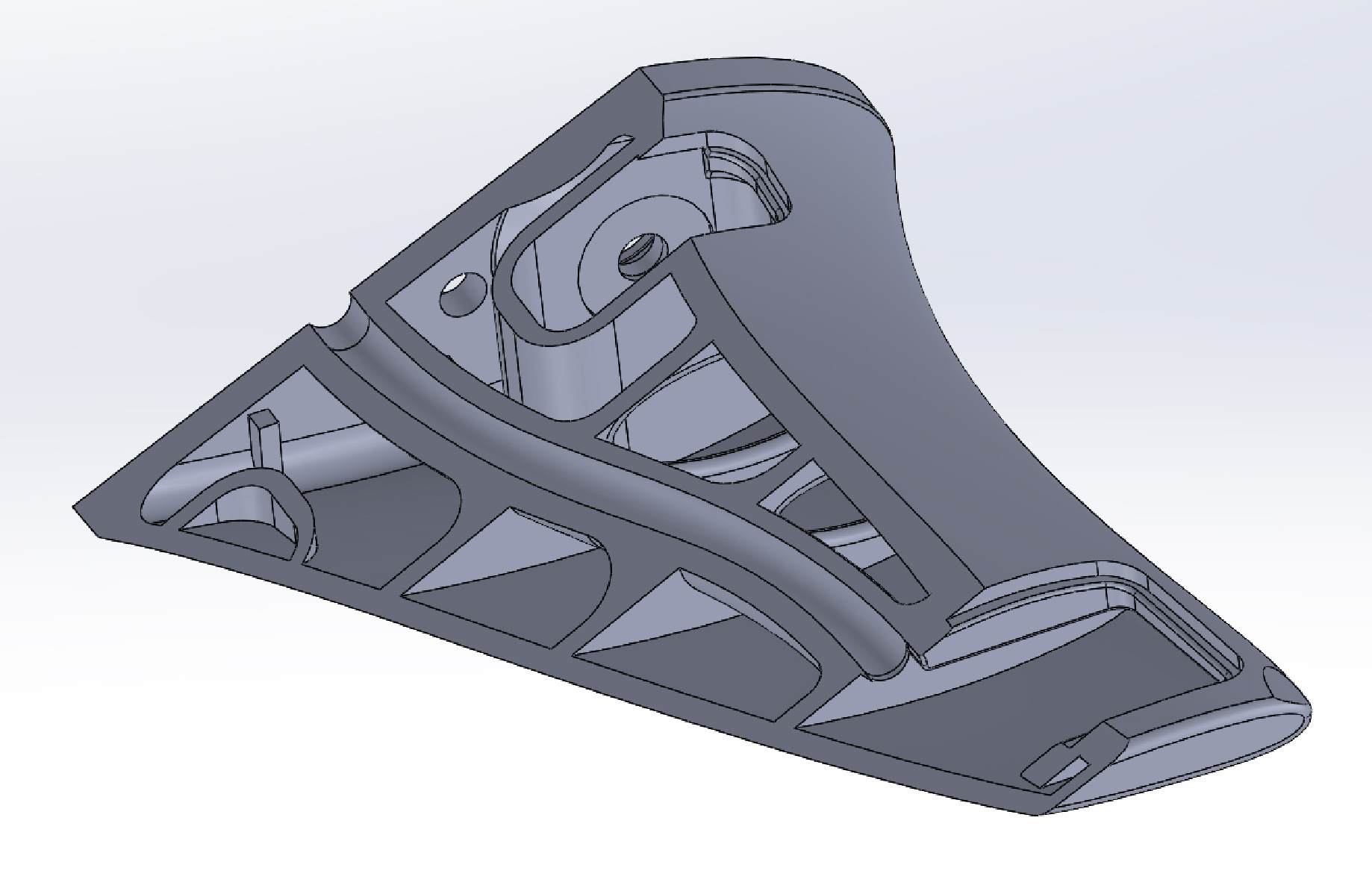Blacktip’s hull was designed as a single piece, with bolt on fins and tail. While this modularity has all sorts of benefits, it was a hard design constraint so that the end drone could be checked as baggage for a flight. Blacktip’s hull also scaled down so that with the fins and tail removed everything just fits within the largest airline checkable pelican case.
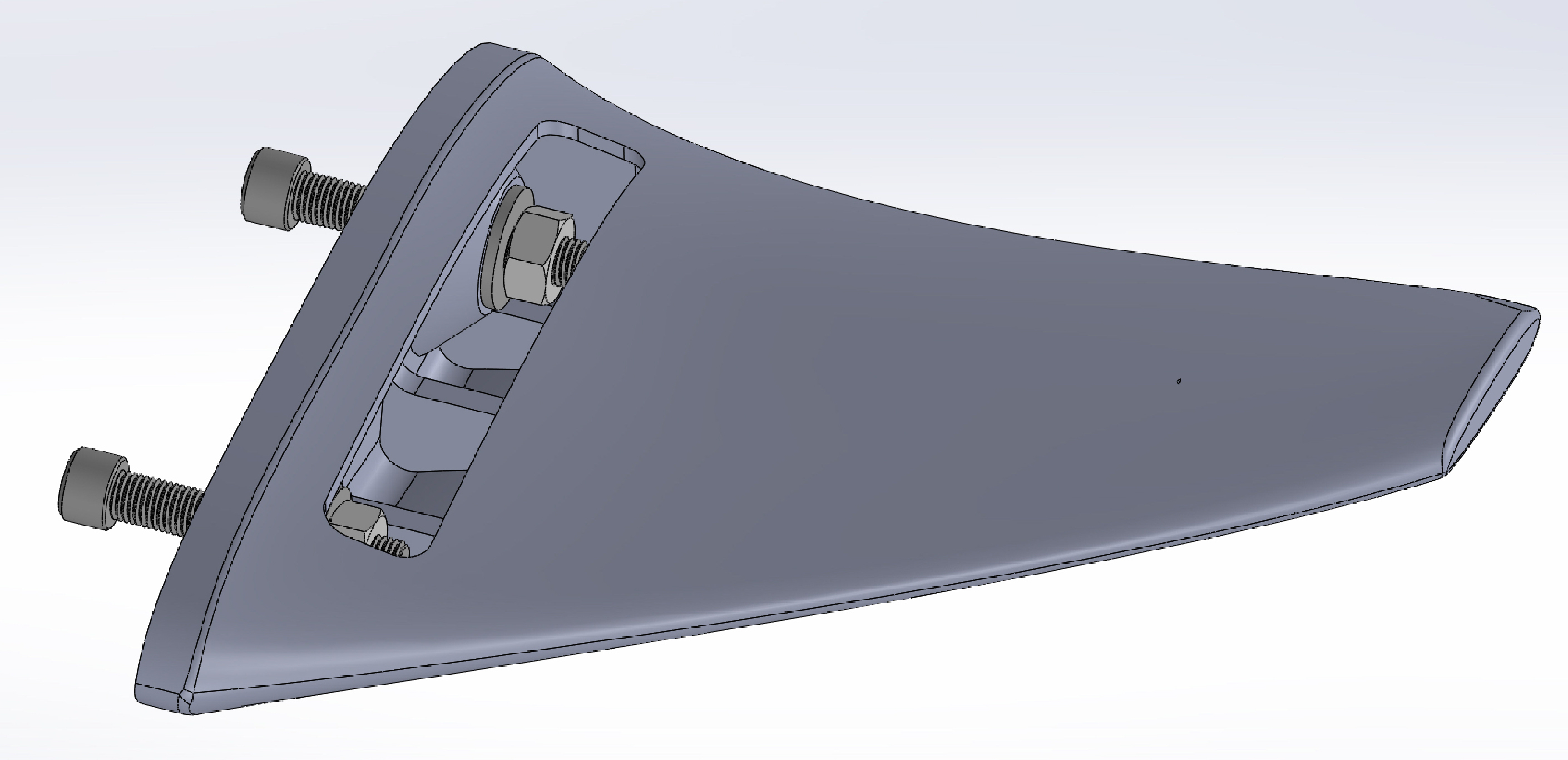
The dorsal fins bolt to mount points on the hull. Their shape was taken directly from that of the reference black tip reef shark on which the Blacktip drone has been modeled.
While the currently pectoral fins only act as passive control surfaces and places to add additional trim weight, they were designed to be able to provide active control surfaces and sensors in the future.
One of the fin designs that contain a chamber on its tip for housing future electronics and actuators can be seen in the figure above. That fin design, (mentioned in an earlier blog post on sensor stubs), takes advantage of a cable run built into the pectoral mounts. The run enables power and data to easily be wired out to new fin designs in the future.
